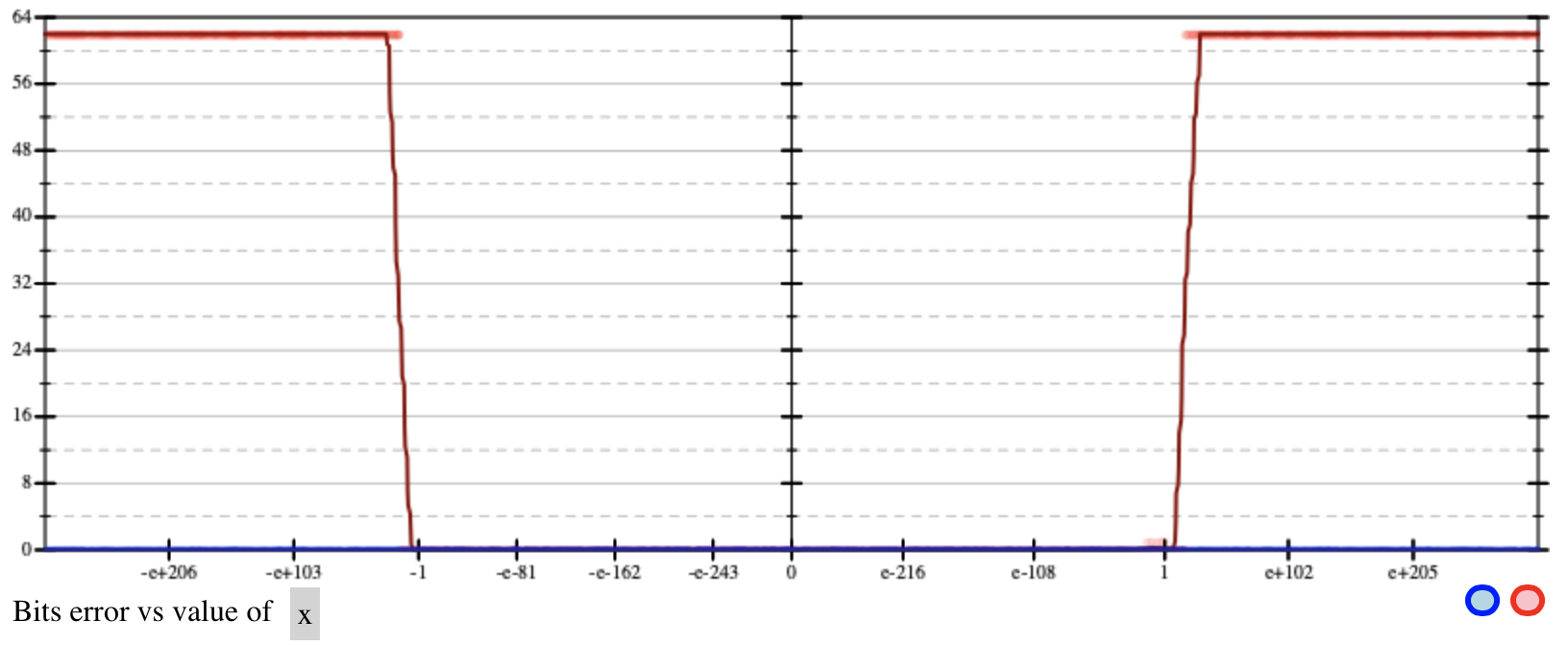Herbie reports


When used in the browser, Herbie generates HTML reports full of information about the accuracy of your input and its output expressions.
First, a brief summary of the results. For most uses, the “Average Error” number, which describes how accurate the input and output expressions are, is the most important statistic in this section. The other numbers list time Herbie took to improve the program and the precision assumed for floating-point operations.

Second, the input and output programs themselves, in standard mathematical syntax. In the top-right corner, the drop-down can be used to switch to C syntax or some other format.

Third, under Error, a graph of floating-point error versus input value. This is helpful for understanding the sorts of inputs Herbie is improving accuracy on. Sometimes, Herbie improved accuracy on some inputs at the cost of accuracy on other inputs that you care more about. You can add a precondition to restrict Herbie to certain inputs in those cases.
These graphs show the error of the input program with a red line,
and the error of the output program with a blue line. Both can be
toggled. If the expression has multiple variables, the variable
picker on the bottom left selects which variable is placed on the
horizontal axis. If Herbie decided to insert an if
statement into the program, the locations of those if
statements will be marked with vertical bars.

x is selected) and the toggles for the
input and output program (both are toggled on).Fourth, a interactive form where you can the output of both your and Herbie's programs. on inputs of your choice Enter argument values on the left, and the input and output programs will be evaluated on those arguments and the results printed on the right.

Fifth, Herbie's derivation of its output program. These can be helpful in understanding how Herbie works. Each substantive step in the derivation also lists the error, in bits, of that step's output. Sometimes you can use that to pick a less-complex and not-substantially-less-accurate program.
Derivations sometime name arithmetic laws used by Herbie, or they might claim derivation steps are done by simplification, series expansion, or other Herbie strategies. The derivation will also call out any time the input is split into cases. When one part of the program is colored blue, that is the part modified in that derivation step.

Sixth, a command to reproduce this Herbie result. If you find a Herbie bug, include this code snippet when filing an issue.

The top of the page has a right-hand menu bar with additional links. “Report” returns you to Herbie's main page. “Log” and “Metrics” give you detailed internal information about Herbie.
We expect the report to grow more informative with future versions. Please get in touch if there is more information you'd like to see.